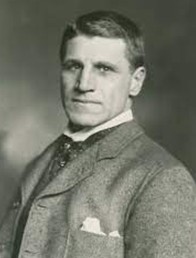Ernst & Young, one of the largest professional services networks around the world, has evolved over more than 180 years and has undergone mergers, global expansion, and continues to adapt to the changing business environment. Created from humble beginnings, this paper discusses the evolution of EY from its origins to its current status as a giant in both the accounting and consulting sectors.

Founding Years: Early Days (1840s - 1900s)
The history of EY dates back to 1840, when the visionary accountant Arthur Young founded his practice in London. His dedication to quality accounting services formed the basis for what would eventually become a global leader. Then, in 1880, a renowned accountant in Germany founded Ernst & Co, which eventually led to the birth of Ernst & Whinney. Both companies started garnering recognition and became market leaders within each respective market.
In the late 19th century, Young’s company continued to thrive and diversify the operations and partnerships that would further enhance the credibility of the company and its appeal. This marked the start of a long history of an innovative accounting tradition to unravel.
The Formation of Ernst & Young (1989)
A turning point in the history of EY was when Ernst & Whinney merged with Arthur Young & Co. into Ernst & Young in 1989. In doing so, it created one of the biggest accounting firms in the world while combining their strengths and resources to eventually provide a much wider array of services. Bringing together these two honored companies marked a new generation, EY would be an opportunity to carry on with their other international expansion and add new services.
International Expansion in the 1990s
From the early 1990s, EY strongly increased its cross-border initiatives. The company explored new markets and entered strategic alliances, thereby becoming an international leader in the accounting industry. The expansion took the form of opening offices in most emerging markets, so that the company could serve the needs of diverse clients.
During this time, too, EY diversified the services provided away from traditional accounting. Consulting and advisory services were one of the extensions made by the firm into such an integrated solution where, within an ever-changing business environment, such a demand for a combination of solutions was realized. Such diversifications were to lead to future innovations by EY and its flexibility with changing client needs.
2000s. Adapting to Change
Probably the biggest challenge to the accounting profession from the early 2000s was after the scandal of Enron that came in 2001; it prompted the passage of the Sarbanes-Oxley Act, more stringent laws on accounting. EY, like any other firm, had to adapt to this legal reality.
EY reacted to the changed landscape by reinforcing its brand and transforming international services. The firm invested in all aspects of risk management and compliance solutions so that it would be in a position to keep in step with increasingly fast-shifting clients’ expectations. That way, EY was not only able to retain its reputation but also emerge as a trusted advisor in an increasingly complex regulatory environment.
EY identified the need to stay abreast of emerging technologies to be ahead of the curve in this new emerging world. The company initiated a digital transformation plan and invested into innovative new technology solutions and analytics capabilities that help enhance the services it offers. It therefore consequently emerged to provide increased business efficiency with speed and effectiveness to its clients.
EY further expanded in the 2010s through a number of digital offerings-data analytics and artificial intelligence, among others. These breakthroughs made possible new insights that could not have been achieved by human effort alone. Leveraging technology, EY branded itself forward-looking-attuned to the needs of the contemporary business world.
Recent Developments: Sustainability and Future of Work (2020s)
In recent years, EY has stressed much on the notions of sustainability and corporate responsibility. The firm committed itself to be carbon neutral for the year 2025 and acknowledged how environmental stewardship was increasingly valued within the contemporary business environment. In such regard, this step reflects EY’s commitment not only to its clients but also to contributing positively to society.
The COVID-19 pandemic had dramatically changed the nature of doing business for organizations, and EY was no exception. The firm adopted the hybrid approach of working and encouraged the well-being of employees. By emphasizing flexibility and showing support to its workforce, EY showed commitment to a healthy and productive environment at work.
As a result of such initiatives, EY remains to be one of the professional service leaders up to date. The ability to adjust its stand and ensure sustainability goes hand in hand with the next step that it takes has managed to give the company a solid stand in the industry.
Important Facts About EY
EY is a firm based in London, UK, and engaged hundreds of thousands of professionals across over 150 countries. The firm is praised for its broad scope of services-consulting, assurance, and tax services. A global presence and drive toward quality place EY among the “Big Four” accounting firms.
Conclusion
The journey of Ernst & Young has been built into one of resilience and adaptability. Since its inception as a small accounting firm, EY has evolved to become one of the world’s leaders in professional services. Implementing innovation, sustainability, and a commitment to excellence, it is uniquely positioned to navigate the complexities of the future while keeping alive the legacy of integrity and professionalism.









